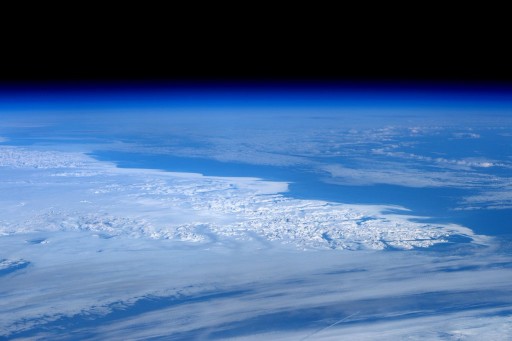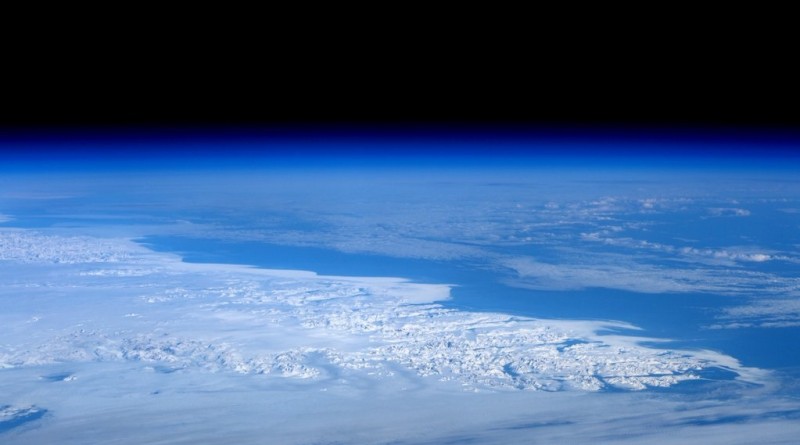ISS Operations Update – March 7, 2016

Experiments:
Space Automated Bioproduct Laboratory (SABL) Setup [SABL is a new space life science facility to be deployed on the International Space Station for a wide variety of research ranging from fundamental, applied and commercial space life sciences research to education-based investigations. The Space Automated Bioproduct Lab is an incubator facility to host cell culture and other biological experiments, supporting bacteria, yeast, algae, fungi, viruses, animal cells and tissues and small plant and animal organisms.]
Observation and Analysis of Smectic Islands in Space [“Observation and Analysis of Smectic Islands in Space” will study the unique behavior of liquid crystals in microgravity with special focus on their overall motion and merging of crystal layers which is known as the formation of smectic islands. Liquid crystals are widely used in technology, being employed in LCD TV screens, laptop screens, watches and other electronics with flat panel displays. The also find use in soaps and membranes. Studying liquid crystals in microgravity will provide new insights into two dimensional system physics of complex fluids. Findings may lead to understanding of well aligned, very high speed electro-optic devices that could find use in embedded ferroelectric liquid crystal micro-displays.]
Otklik Experiment Hardware Check [Otklik uses several piezoelectric sensors to track the impacts of small particles and debris on the exterior of the International Space Station to monitor the abundance of debris events and a series of other characteristics. These measurements provide valuable data for the construction of future spacecraft]
Uragan Earth Imagery Collection
Ultrasonic Background Noise Test Setup [Ultrasonic Background Noise Test – UBNT will observe high frequency noise levels aboard ISS that is generated by systems hardware aboard the station within the US Destiny Lab and Node 3 to help develop an automatic leak detection and location system using only the high frequency noise of tiny leaks in the pressure shell of a spacecraft to detect and pin-point leaks that might not even be visible to the human eye. The study will gather background noise data so that algorithms can be developed that filter out all the ‘normal’ ultrasonic noise and only detect abnormalities such as leaks.]
Habitability [Assessment of International Space Station Vehicle Habitability will see teams on the ground study video of the behavior of crew members within the habitable environment of ISS while the crew fills out questionnaires and collects video of areas of interest in order to provide an assessment of the habitability of ISS in its current state for a one-year mission. Results will be used to develop spacecraft with improved habitability properties to allow crew members to optimally utilize the onboard space.]
WinSCAT Experiment Session [MedOps WINSCAT (Spaceflight Cognitive Assessment Tool for Windows) is a computer based psychological evaluation that investigates concentration, verbal working memory, attention, short-term memory, spatial processing, and math skill of humans exposed to microgravity for extended periods of time.]
Multi-Omics Sampling & Questionnaire [Multi-Omics studies the effect of the space environment and prebiotics on astronauts’ immune function.]
Systems/Maintenance:
Nominal Inspections/Servicing Tasks (Morning Inspection, Caution & Warning Panel Check, Sozh System Maintenance) (Russian Crew)
Urine Processing Assembly: UPA remains unavailable after a distillation assembly belt slippage occurring after last week’s Separator Plumbing Assembly replacement. Troubleshooting from the ground was not successful and, pending one more attempt overnight, Tuesday’s plan for the crew will include a Distillation Assembly replacement to recover UPA that had been unavailable since Feb. 21.
C2V2: Tim Peake routed and installed cables for the C2V2 (Common Communications for Visiting Vehicles) system, connecting internal radio and control equipment with external antennas, installed last year.
Tweets from Space:
San Francisco @sfgov Golden Gate @GGBridge #home for my sister, @SFGiants & science @Exploratorium #CitiesinSpace pic.twitter.com/7b02IFD9wD
— Tim Kopra (@astro_tim) March 7, 2016
Some midday winter sun glinting off #Greenland’s snow-capped peaks https://t.co/o9QWoR5X6G pic.twitter.com/cpYLm82jrW
— Tim Peake (@astro_timpeake) March 7, 2016
Currents and waves off the Baja coast. @Space_Station #Mexico #Explore pic.twitter.com/OnfVBawlag
— Tim Kopra (@astro_tim) March 7, 2016
Passing through thick ‘aurora soup’ today! #Principia #aurora https://t.co/SU85yM1FM4 pic.twitter.com/zR4ijDWWea
— Tim Peake (@astro_timpeake) March 7, 2016
Sometimes looking down on Earth at night can be kinda spooky. #Principia https://t.co/8Iu8oIYEoG pic.twitter.com/8dTv6ATPbk
— Tim Peake (@astro_timpeake) March 6, 2016
Awesome gift from @astro_timpeake to each #Exp46 crew. Has photo w/ @PredsNHL goaltender@Pekka_Rinne & flown jersey. pic.twitter.com/su3RBlr9Ir
— Tim Kopra (@astro_tim) March 6, 2016
From Spain over France to Moscow on a cloudy night. #Principia #timelapsehttps://t.co/P6U8tGJBWo
— Tim Peake (@astro_timpeake) March 6, 2016

